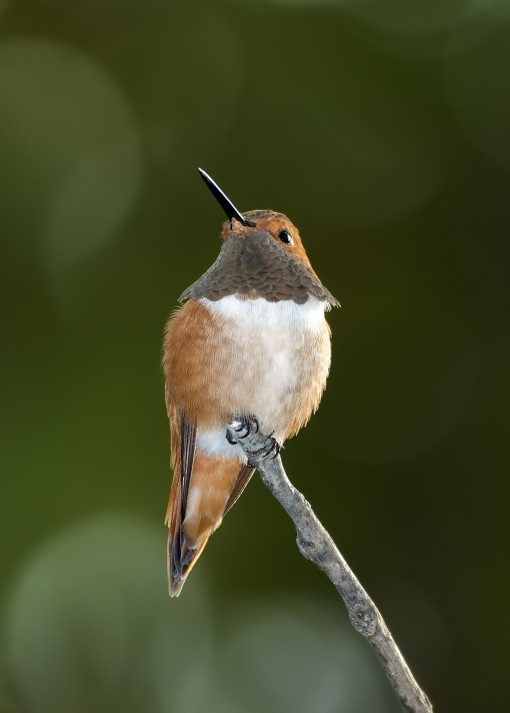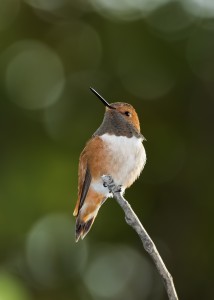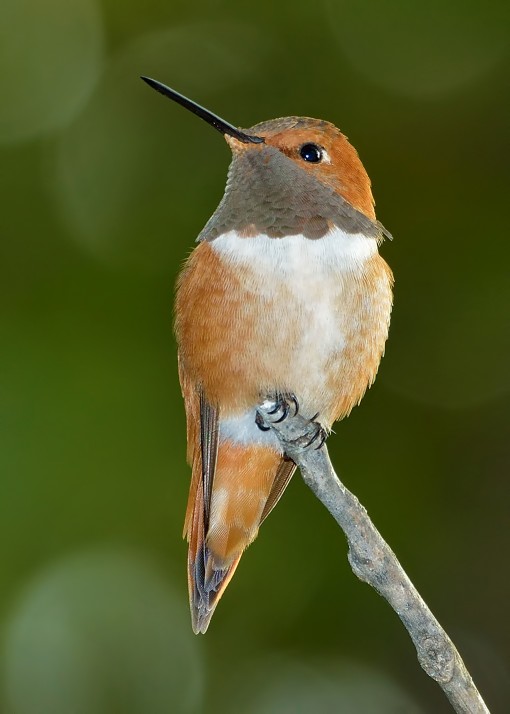Rufous Returns
December 2, 2013 | By Shoal Creek Conservancy
This blog post was written by Ted Lee Eubanks. To learn more about the author, please visit this site.

The bird weighs less than a grape, has a brain smaller than a pea, and flies thousands of miles each year between the place it nests and where it chooses to winter. The bird has returned to winter in my yard on Shoal Creek, precisely where it stayed last year. I know about bird migration, and I am aware of the staggering distances they are capable of traveling. But how do we explain one of the smallest birds flying such long distances? How can I account for my rufous hummingbird?
People once thought that hummingbirds rode on the backs of geese in migration. Until recently scientists debated whether or not a hummingbird could store enough energy to fly across the Gulf of Mexico. We now know that hummingbirds are capable of crossing the Gulf and more. In fact, when body length is taken into account, the rufous hummingbird undertakes the longest known migration among birds in the world.

Breeding rufous hummingbirds reach the northernmost latitude of any hummingbird (61° N). Their breeding range spans Montana and Idaho north to southern Alaska. This hummingbird migrates south in the fall along the Rocky Mountains to Mexico. In the past couple of decades, however, this species has been found wintering along the Gulf of Mexico from Texas east to Florida in increasing numbers. Birds have wintered each year in my yard along Shoal Creek for at least 15 years, and in most years I have several that stay here through the winter.
The hummingbirds that winter with me, however, are usually females and immatures. Only last year did my first adult male rufous decided to stay for the winter. This is the bird that has returned this year, a glorious adult male that in full sunlight seems to catch afire.
Hummingbirds that overwinter depend on feeders to survive. However, sugar water only provides the energy for feeding on what matters the most to a hummingbird, small insects. Hummingbirds are agile flycatchers, feeding on gnats and other small flying insects. They will perch near the top of a tree and then dart out to grab a bug on the wing. The nectar (sugar water from a feeder) may fuel the flight, but protein comes from bugs.
When the temperature drops, hummingbirds lower their metabolic rates and become torpid. They must feed immediately in the morning, however, or else they will not survive. If you decide to feed hummingbirds during the winter, please remember that they are depending on you.
I suspect that my rufous will stay here through March and then begin its flight north. I can only hope that after it leaves it survives to return to my yard again the following fall. But for now he is back, and I plan to enjoy every moment that he shares with me here along Austin’s Shoal Creek.

